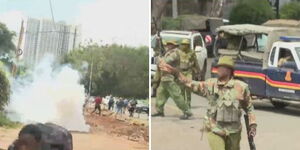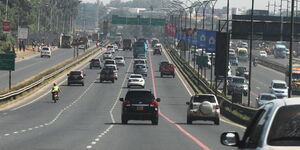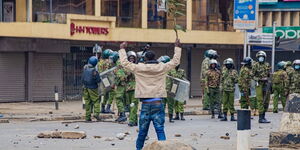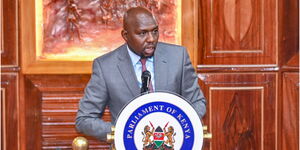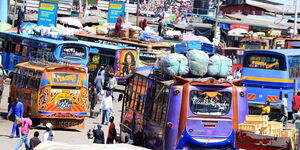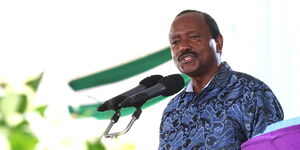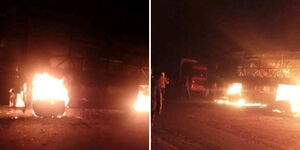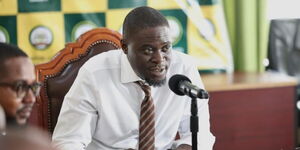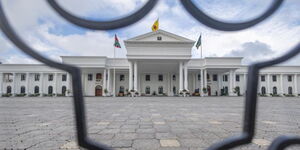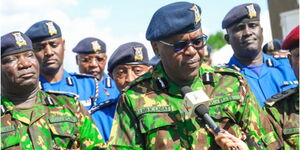On March 10, 1977, the Gikuyu Embu Meru Association (Gema) stalwarts Njenga Karume and Njoroge Mungai hatched a plot to have Kenya's first vice president Jaramogi Oginga Odinga take over the presidency from Mzee Jomo Kenyatta.
In an uncanny scenario that mirrors Raila Odinga's current political landscape, his father's push for the top office was hinged on a Change-the-Constitution movement that was grabbing all the headlines in 1977.
Jaramogi would have become a key beneficiary of the Change-the-Constitution group, with his vocal supporter, Achieng Oneko, present during all the referendum rallies.
Mungai and Karume were on the frontline in pushing for the constitutional change that would block then Vice President, Daniel arap Moi, from automatically ascending to power upon Mzee Jomo's death.
On the other side of the spectrum, former Attorney General Charles Njonjo, and close ally Mwai Kibaki led the faction that was rooting for a Moi presidency.
Underhand tactics had to be employed to curtail the popularity of Jaramogi who was making inroads in the vote-rich GEMA community.
"If allowed to run, he will be formidable competition for Moi than his only other announced opponent, Education minister Taita Toweett. If, in fact, Kikuyu group supports Odinga's candidacy, Toweett may well withdraw before April 3," the US ambassador to Kenya at the time, Anthony Marshall, wrote on Jaramogi,
When Jaramago announced his return to active politics, all the major media houses gave him a total blackout.
During the press conference, Jaramogi accused Kanu acting Secretary-General Robert Matano of being puppets of a small clique whose intention was to cast him into political oblivion.
The East African Standard and Daily Nation, then edited by George Githii (a close Njonjo ally) ignored the conference entirely.
The December 1976 to January 1977 Kanu grassroots polls took up a significant meaning as Jaramogi's lawyer, lawyer Otieno Ambala, went to the High Court seeking to invalidate election in his Siaya base, if successful, Jaramogi would have a political platform in the ruling party.
Jaramogi was in 1975 and 1976 elected Siaya district Kanu chairman but the party headquarters and the registrar of societies, who was under Njonjo's office, refused to ratify the elections.
Njonjo proved to be too great an adversary as he was able to quash his GEMA opponents.
"To my mind, Charles Njonjo was an arrogant self-conceited fellow who felt he was intellectually superior to those who were close to Kenyatta," reads an excerpt from Karume's autobiography, Beyond expectations: From charcoal to gold.
According to US intelligence reports, Jaramogi held a closed-door meeting with Mzee Jomo at State House Nakuru on July 13, 1977.
Embassy official at the time Onyango Midika claimed the meeting was organized by Mbiyu Koinange, adding that Kenyatta had agreed to create a new constituency in Siaya and allow Jaramogi to run.
Njonjo's camp managed the transition after Kenyatta died in the presence of Njonjo ally, Eliud Mahihu who called Moi and Kibaki that night to make all the necessary transition arrangements.
However, this turned out to be false as no elections were held and Jaramogi's camp was stung by the betrayal.
A month after Mzee Jomo's death, Njonjo surprised Parliament by claiming there was a plot to assassinate key government figures.

